Bernhard Scholkopf
Bloom Origami Assays: Practical Group Testing
Jul 21, 2020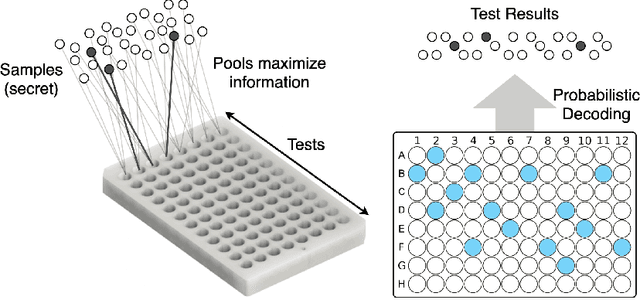
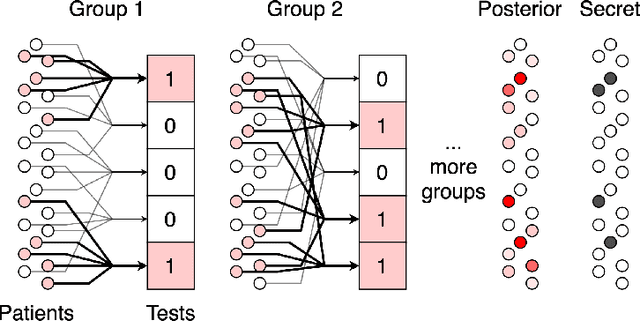
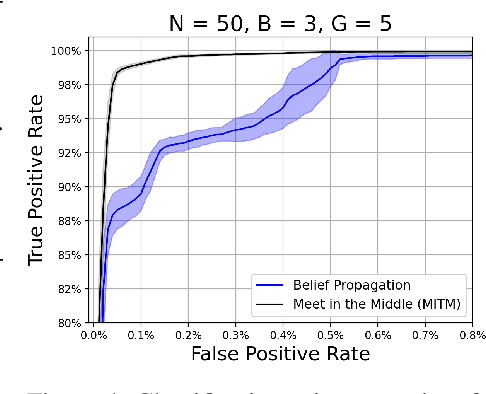
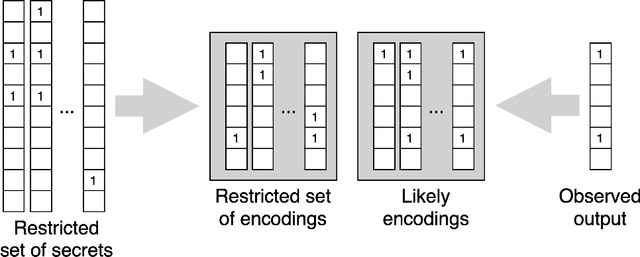
Abstract:We study the problem usually referred to as group testing in the context of COVID-19. Given n samples collected from patients, how should we select and test mixtures of samples to maximize information and minimize the number of tests? Group testing is a well-studied problem with several appealing solutions, but recent biological studies impose practical constraints for COVID-19 that are incompatible with traditional methods. Furthermore, existing methods use unnecessarily restrictive solutions, which were devised for settings with more memory and compute constraints than the problem at hand. This results in poor utility. In the new setting, we obtain strong solutions for small values of n using evolutionary strategies. We then develop a new method combining Bloom filters with belief propagation to scale to larger values of n (more than 100) with good empirical results. We also present a more accurate decoding algorithm that is tailored for specific COVID-19 settings. This work demonstrates the practical gap between dedicated algorithms and well-known generic solutions. Our efforts results in a new and practical multiplex method yielding strong empirical performance without mixing more than a chosen number of patients into the same probe. Finally, we briefly discuss adaptive methods, casting them into the framework of adaptive sub-modularity.
Real Time Trajectory Prediction Using Deep Conditional Generative Models
Sep 09, 2019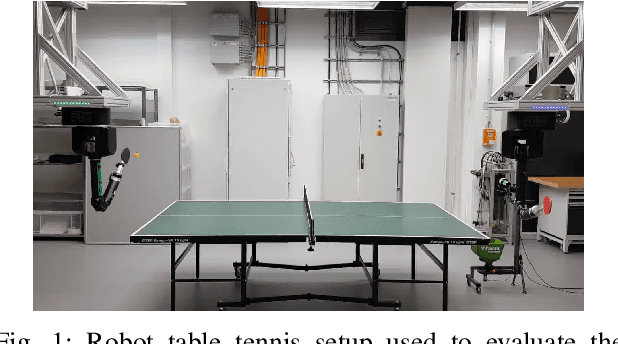

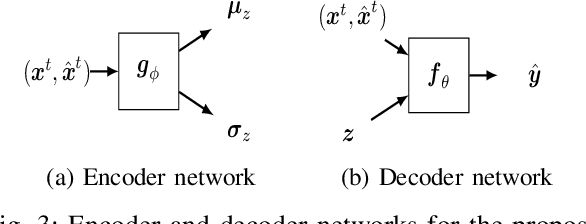
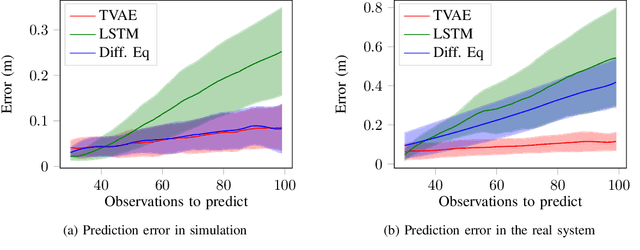
Abstract:Data driven methods for time series forecasting that quantify uncertainty open new important possibilities for robot tasks with hard real time constraints, allowing the robot system to make decisions that trade off between reaction time and accuracy in the predictions. Despite the recent advances in deep learning, it is still challenging to make long term accurate predictions with the low latency required by real time robotic systems. In this paper, we propose a deep conditional generative model for trajectory prediction that is learned from a data set of collected trajectories. Our method uses an encoder and decoder deep networks that maps complete or partial trajectories to a Gaussian distributed latent space and back, allowing for fast inference of the future values of a trajectory given previous observations. The encoder and decoder networks are trained using stochastic gradient variational Bayes. In the experiments, we show that our model provides more accurate long term predictions with a lower latency that popular models for trajectory forecasting like recurrent neural networks or physical models based on differential equations. Finally, we test our proposed approach in a robot table tennis scenario to evaluate the performance of the proposed method in a robotic task with hard real time constraints.
Towards building a Crowd-Sourced Sky Map
Jun 05, 2014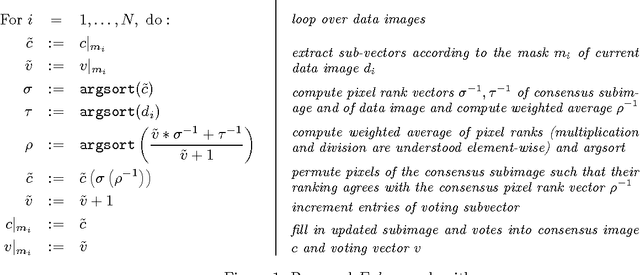

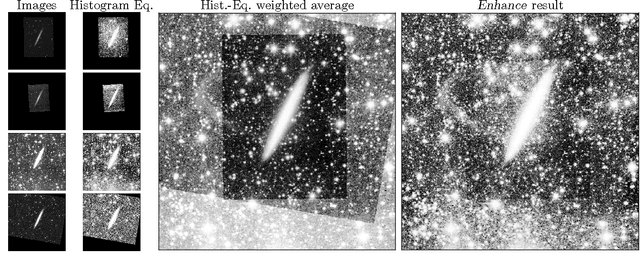
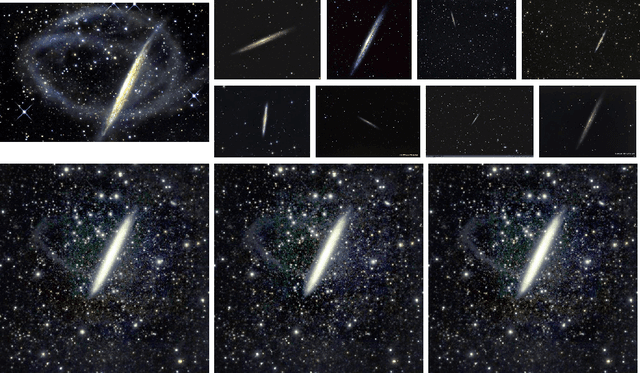
Abstract:We describe a system that builds a high dynamic-range and wide-angle image of the night sky by combining a large set of input images. The method makes use of pixel-rank information in the individual input images to improve a "consensus" pixel rank in the combined image. Because it only makes use of ranks and the complexity of the algorithm is linear in the number of images, the method is useful for large sets of uncalibrated images that might have undergone unknown non-linear tone mapping transformations for visualization or aesthetic reasons. We apply the method to images of the night sky (of unknown provenance) discovered on the Web. The method permits discovery of astronomical objects or features that are not visible in any of the input images taken individually. More importantly, however, it permits scientific exploitation of a huge source of astronomical images that would not be available to astronomical research without our automatic system.
* Appeared at AI-STATS 2014
A Kernel Method for the Two-Sample Problem
May 15, 2008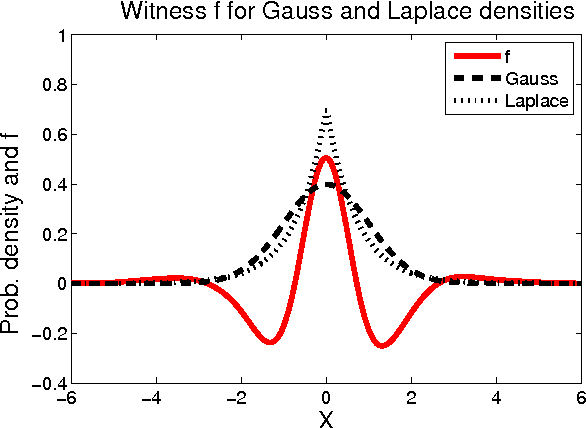

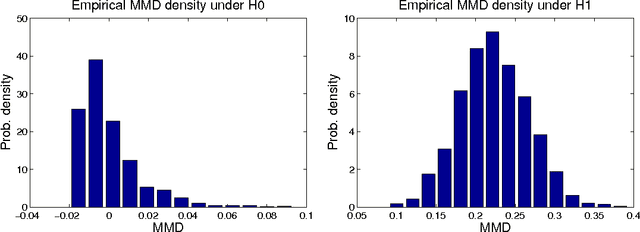

Abstract:We propose a framework for analyzing and comparing distributions, allowing us to design statistical tests to determine if two samples are drawn from different distributions. Our test statistic is the largest difference in expectations over functions in the unit ball of a reproducing kernel Hilbert space (RKHS). We present two tests based on large deviation bounds for the test statistic, while a third is based on the asymptotic distribution of this statistic. The test statistic can be computed in quadratic time, although efficient linear time approximations are available. Several classical metrics on distributions are recovered when the function space used to compute the difference in expectations is allowed to be more general (eg. a Banach space). We apply our two-sample tests to a variety of problems, including attribute matching for databases using the Hungarian marriage method, where they perform strongly. Excellent performance is also obtained when comparing distributions over graphs, for which these are the first such tests.
 Add to Chrome
Add to Chrome Add to Firefox
Add to Firefox Add to Edge
Add to Edge